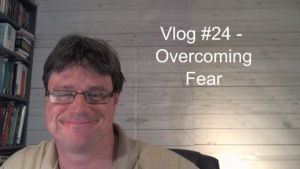 I recently talked about the two main components to motivation desire and fear. For most people, fear dominates. This has favorable and unfavorable ramifications. Our fear of imprisonment, social admonishment, and danger overcomes our desire for the stuff in other people’s houses. This is a big factor as to why so few of us perpetrate breaking and entering. However, the same mechanism gives most of us a status quo bias and keeping things the same does not require us to take any action. But more than that, if we are operating in a state of fear, it is extremely difficult for us to think.
I recently talked about the two main components to motivation desire and fear. For most people, fear dominates. This has favorable and unfavorable ramifications. Our fear of imprisonment, social admonishment, and danger overcomes our desire for the stuff in other people’s houses. This is a big factor as to why so few of us perpetrate breaking and entering. However, the same mechanism gives most of us a status quo bias and keeping things the same does not require us to take any action. But more than that, if we are operating in a state of fear, it is extremely difficult for us to think.
Influencer Lesson No. 5: People will not respond well to your influence if they are afraid.
Fear: Fight, Flight, or Freeze
Over the thousands of years of human evolution, the thinking part of our brain, the neocortex grew on top of the brain elements that date back to much earlier stages in our evolutionary history. These systems evolved in ways that keep us alive. It did us little good to contemplate how to develop patterns of speech when we were in danger of being pounced on by a saber toothed cat. In times of high stress, our brains, by design, put neocortex function on the back burner and give priority to the survival systems, such as the amygdala—the threat assessment part of the brain. The amygdala, stimulates the adrenal glands, and we become hyperaware and ready to take action instantaneously. I discuss this phenomenon in greater detail in the Alternative Book Club’s book Spotlight on the Art of Fear.
The response choices, however, are limited. We don’t start to analyze and reason our way out of problems. That takes too long. We are basically given three choices: fight, flight, or freeze. Said another way, we’ll violently resist, we’ll run away, or we’ll stop in place and hope the threat can’t see us if we hide well.
Stop-Loss
These choices are basically stop-loss mechanisms. Stop-loss is a term from equities trading which automatically sells a stock position to limit the financial loss. A stop-loss guards against the downside, but in so doing, it eliminates possibility of realizing a future upside as many times stock values rebound higher than they were before.
When we are in a fight, flight, or freeze operating mode, we are totally consumed by survival. We see danger instead of opportunity. Since the amygdala is in charge, we literally are unable to think about potential upsides.
Put the Neo-Cortex Back in Charge
When considering the Influencer perspective, we acknowledge that there are times to make the case and times to work with our audience so they may be receptive to our messages. I don’t try to persuade someone who is operating in a state of fear.
The best strategy is to help them avoid entering a fear state to begin with. I make the case by building from premises they support and appreciate. I provide analogies and stories which are intended to build emotional and cognitive familiarity. If the final point isn’t obvious at the start, I always hold back the conclusion until all the support material is out. I’ve used this approach with care and have gotten better reactions from people than I would have otherwise.
If people are already in a fear state, it’s time to be patient. Chemistry takes time to work. The adrenaline pumping in the bloodstream does not exit immediately. One has to go on a journey from anxiety to calm. The best thing a would-be Influencer could do is to get the person out of a stressful situation, put them in a soothing environment, try to make them comfortable and just listen. Let them talk about their concerns, their fears, and their frustrations. Don’t challenge or push back. As this happens, the person will slowly return to a state of safety and will return cognitive control back to the neo-cortex.
Once we can start talking with our brains again, we can start to move forward together on how to solve the problems that need solving.
